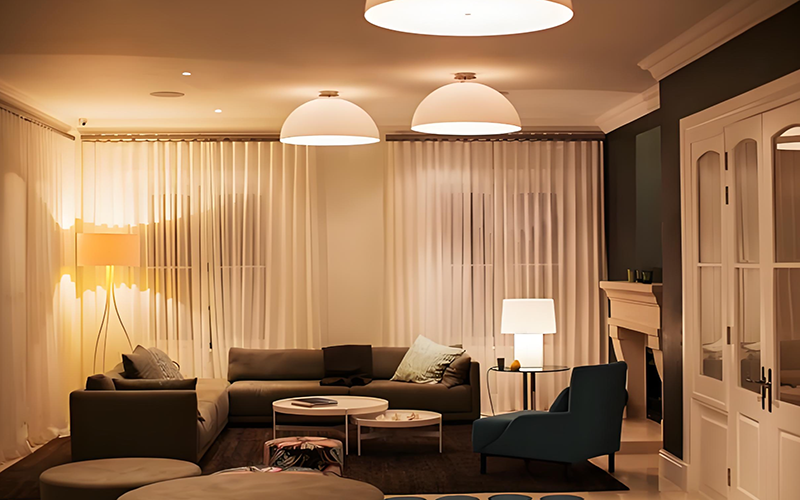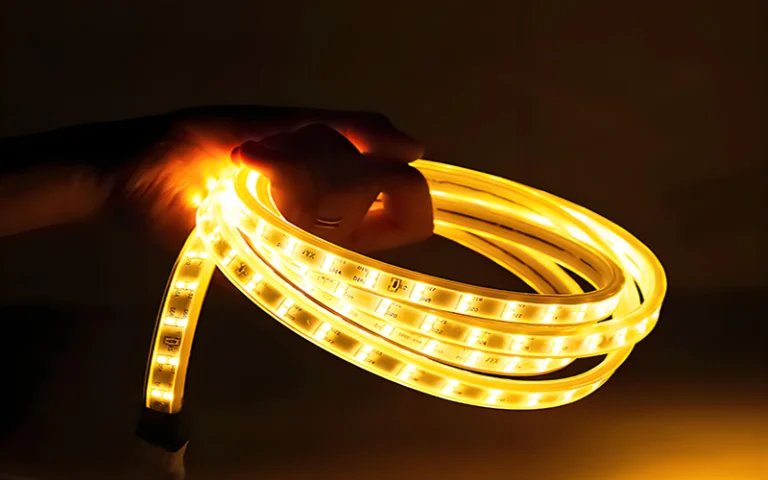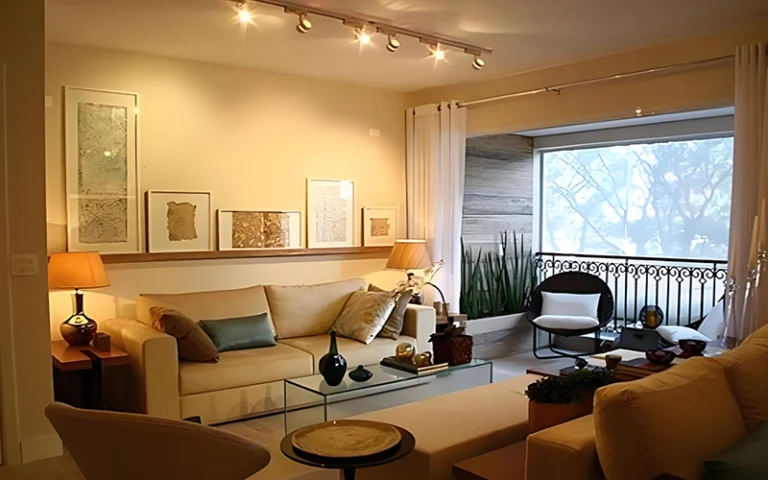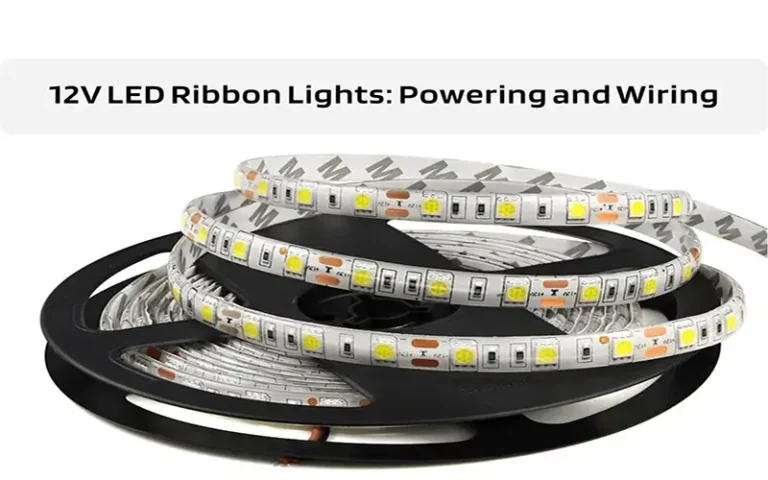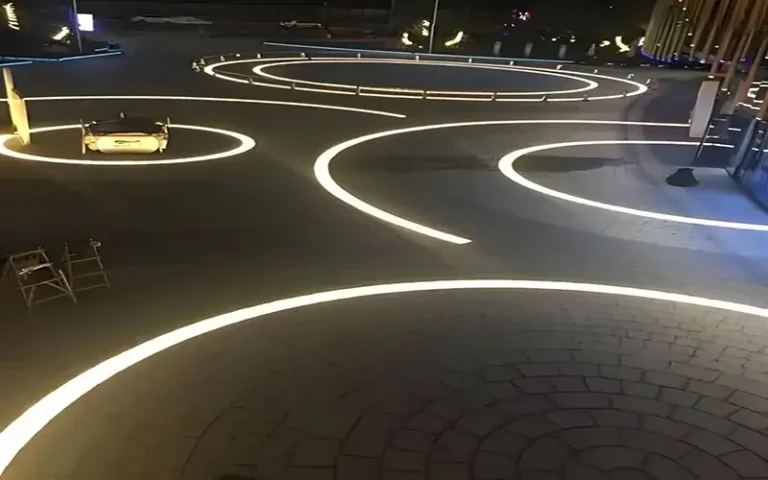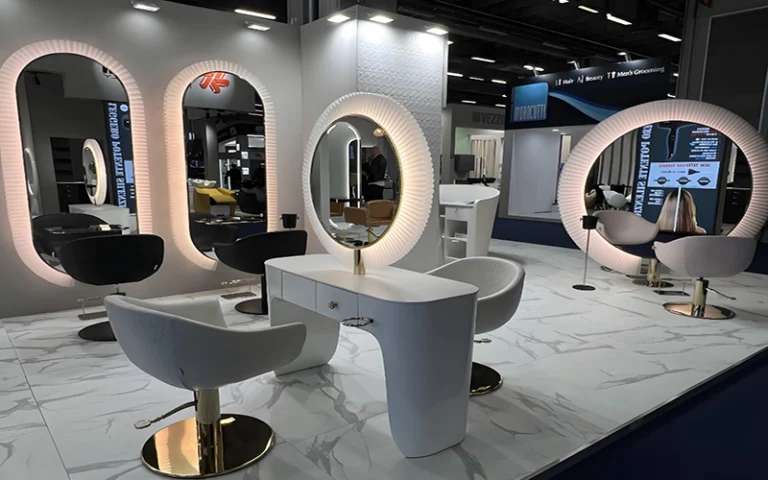Direcția luminii de la corpurile de iluminat: Un ghid cuprinzător
Lumina este un element esențial în viața noastră și este strâns legată de viața noastră. Cu toate acestea, direcția luminii, în special de la corpurile de iluminat, poate afecta semnificativ starea de spirit, funcționalitatea și estetica unui spațiu. În acest ghid cuprinzător, vom aprofunda subtilitățile direcției luminii din corpurile de iluminat, explorând tipurile, importanța și aplicațiile acesteia.
Înțelegerea elementelor de bază ale corpurilor de iluminat Direcția luminii
Direcția luminii se referă la calea sau direcția luminii emise de un corp de iluminat. Aceasta este determinată de designul și construcția corpului de iluminat în sine, precum și de amplasarea sursei de lumină în interiorul acestuia. Direcția luminii afectează modul în care lumina interacționează cu suprafețele, accentuează anumite caracteristici și creează umbre.
În proiectarea iluminatului, atât proiectanții, cât și consumatorii trebuie să înțeleagă elementele fundamentale generale ale direcției luminii. Acest lucru permite selectarea corectă a tipurilor de corpuri de iluminat și a amplasării acestora.
Obținerea direcției corecte este esențială pentru crearea ambianței și funcționalității dorite într-un spațiu. Lumina direcționată corespunzător poate îmbunătăți estetica, crește productivitatea și poate avea chiar un impact asupra eficienței energetice.
Tipuri de direcție a luminii în corpurile de iluminat Lumină
Corpurile de iluminat și corpurile de iluminat oferă diferite tipuri de direcție a luminii, de la sus la jos. Fiecare direcție a luminii are caracteristici și aplicații diferite:
- Downlight: Un model de lumină comun utilizat în iluminatul de serviciu și ambiental. Downlight iluminează suprafața de sub corp și este ideal pentru sarcini concentrate sau pentru iluminarea generală a spațiilor mari.
- Lumină ascendentă: Lămpile, de obicei aplicele de perete și iluminatul decorativ, au această direcție a luminii. Ea respinge lumina de pe tavan, creând o strălucire mai moale, difuză, care îmbunătățește iluminatul ambiental.
- Lumină omnidirecțională: Lumina omnidirecțională se găsește de obicei în corpurile de iluminat cu becuri expuse sau nuanțe clare. Aceasta difuzează în toate direcțiile, oferind o iluminare uniformă pentru fiecare parte a unui spațiu.
- Lumină focalizată: Adesea utilizate pentru iluminatul sarcinilor, cum ar fi lămpile de lectură și spoturile. Lumina focalizată oferă un fascicul îngust și concentrat de lumină îndreptat spre o anumită zonă.
- Lumină reglabilă: Luminile dimmabile sau multidirecționale permit utilizatorului să schimbe direcția corpurilor de iluminat în funcție de necesități. Oferă un iluminat versatil care poate fi personalizat în funcție de nevoile în schimbare.
Importanța corpurilor de iluminat Direcția luminii
Direcția luminii din corpurile de iluminat joacă un rol fundamental în proiectarea lămpilor și a iluminatului. Un iluminat corect direcționat sporește vizibilitatea, reduce oboseala ochilor și evidențiază caracteristicile sau punctele focale dorite.
De exemplu, iluminatul descendent este adesea utilizat în bucătării și birouri pentru a oferi un iluminat clar pentru muncă. Între timp, iluminatul ascendent este popular în spațiile care necesită ambianță și o stare de relaxare, cum ar fi camerele de zi sau zonele de luat masa.
În plus față de funcționalitate, direcția luminii afectează și eficiența energetică. De exemplu, dacă lumina este direcționată în direcția greșită sau este prea difuză, este posibil să aveți nevoie de lămpi suplimentare pentru a acoperi zonele întunecate, ceea ce crește consumul de energie. Cu direcția corectă, puteți obține luminozitatea optimă cu mai puține resurse.
Iluminatul direcțional vs. iluminatul ambiental
Iluminat direcțional, Iluminatul direcțional se concentrează pe iluminarea anumitor zone sau obiecte și este adesea folosit pentru a atrage atenția asupra anumitor aspecte ale unui spațiu. Exemplele includ operele de artă, blaturile sau zonele de lectură dintr-o locuință. Acest tip de iluminat utilizează adesea corpuri de iluminat cu distribuție îngustă a fasciculului, cum ar fi spoturile sau luminile de lucru.
Iluminat ambiental, Iluminatul ambiental este conceput pentru a oferi în general o iluminare uniformă în întreaga cameră. Iluminatul ambiental este ideal pentru spațiile în care o ambianță relaxantă și primitoare este importantă. Este de obicei mai moale și mai difuză, creând o atmosferă echilibrată și confortabilă.
Alegerea între iluminatul direcțional și iluminatul ambiental depinde adesea de scopul camerei. Ambele pot fi utilizate în iluminatul interior. O combinație echilibrată a celor două este adesea cel mai bun mod de a crea un plan de iluminat stratificat, versatil, care servește atât scopurilor practice, cât și celor estetice.
Alegerea direcției corecte a luminii pentru diferite spații
Atunci când alegeți direcția de iluminare potrivită pentru fiecare spațiu. Trebuie să se ia în considerare scopul camerei, precum și atmosfera dorită și nevoile specifice de iluminare. Diferitele camere au funcții unice, iar direcția luminii poate afecta semnificativ starea de spirit și utilitatea acestor zone. Despre lămpile de interior, vă rugăm să verificați Iluminatul de interior: Ce să luați în considerare atunci când alegeți lămpile
De exemplu, există unele diferențe în direcțiile de iluminare ale iluminatului rezidențial și ale iluminatului de birou. Principalul lucru este să găsiți un punct comun, care să ducă la un iluminat echilibrat, confortabil și atrăgător din punct de vedere vizual.
Camere de zi
n camera de zi, mai multe unghiuri de iluminare se vor îmbina. Obiectivul principal al iluminatului este să se încerce o combinație de iluminare ascendentă și omnidirecțională pentru a crea o atmosferă caldă și primitoare.
Iluminatul ascendent, cum ar fi aplicele de perete, reflectă lumina spre tavan, creând o strălucire difuză, moale, care sporește relaxarea. Există, de asemenea, spoturi. Pentru activități precum cititul sau jocurile, utilizați iluminatul de accent reglabil pentru a adăuga iluminare focalizată. În plus, există benzi de lumină cu LED-uri instalate pe tavan pentru iluminat ambiental etc., adăugând profunzime și caracteristici camerei.

Bucătării
Bucătăriile au nevoie de un iluminat amplu, orientat către sarcini, pentru a asigura siguranța și claritatea în timpul pregătirii alimentelor și gătitului. Iluminatul de deasupra blaturilor, insulelor și a blaturilor de gătit asigură un iluminat concentrat direct acolo unde este necesar.
Panourile de plafon încastrate și luminile suspendate sunt alegeri excelente, deoarece ajută la reducerea umbrelor care pot face sarcinile mai dificile.
Iluminat sub dulap benzi cu LED-uri sunt un plus valoros, oferind iluminare direcțională pe blaturi și îmbunătățind vizibilitatea în timpul preparării alimentelor, tăierii legumelor și curățării.
Dormitoare
Ca loc de relaxare și de dormit, dormitoarele beneficiază cel mai mult de o combinație de iluminat ambiental și de iluminat de serviciu pentru a crea un mediu versatil. Iluminatul stratificat permite controlul ușor al nivelurilor de luminozitate pentru a se potrivi diferitelor stări de spirit sau obiceiuri.
Iluminatul ascendent, cum ar fi lămpile de podea sau corpurile montate pe perete, creează o atmosferă moale și relaxantă pentru relaxare.
Pentru sarcini specifice, cum ar fi cititul în pat sau îmbrăcatul, iluminatul direcțional, cum ar fi lămpile de noptieră sau lămpile de perete reglabile, vă permite să vă concentrați fără a deranja alte persoane din cameră.
Băi
Băile necesită un iluminat practic și clar. Pentru a asigura o vizibilitate sigură și precisă, în special în jurul mesei de toaletă.
Iluminarea focalizată îndreptată în jos sau deasupra oglinzii oferă lumină directă, care este ideală pentru sarcinile de îngrijire, cum ar fi bărbieritul sau aplicarea machiajului. O altă soluție este instalarea de benzi luminoase cu LED-uri în jurul oglinzii măsuței de toaletă, care are un efect de iluminare, permițându-ne să vedem mai clar.
Iluminatul stratificat cu lămpi ambientale moi, cum ar fi lămpile de perete sau luminile încastrate în tavan, ajută la echilibrarea luminozității, reducerea umbrelor dure și crearea unei atmosfere calde.
Birouri
Birourile de acasă și spațiile de lucru necesită un iluminat care ajută la concentrare și minimizează oboseala ochilor. Acest lucru este valabil mai ales atunci când se stă la birou pentru perioade lungi de timp și creează un mediu de iluminat confortabil și echilibrat.
Iluminatul direcțional, cum ar fi lămpile de birou, asigură o iluminare focalizată pe suprafețele de lucru, prevenind strălucirea ecranului și sporind productivitatea. Iluminatul ambiental stratificat ajută la îndulcirea spațiului, reducând contrastul dintre luminile de lucru luminoase și zonele întunecate ale camerei.
Corpuri de iluminat reglabile Lumină: Direcție flexibilă a luminii
Lămpile reglabile sunt o alegere versatilă care permite utilizatorilor să schimbe direcția luminii în funcție de nevoi sau preferințe specifice. Aceste lămpi sunt ideale pentru spațiile care servesc mai multor scopuri sau pentru utilizatorii care doresc să își controleze setările de iluminare.
De exemplu, luminile reglabile dintr-o cameră de zi pot fi repoziționate pentru a evidenția operele de artă, pentru a accentua decorul sau pentru a asigura iluminatul de lucru atunci când este necesar. În mod similar, lămpile de masă reglabile permit utilizatorilor să mute lumina exact acolo unde au nevoie de ea, reducând stresul și îmbunătățind concentrarea.
Așadar, atunci când alegeți direcția luminii unei lămpi, nu vă limitați la una singură. Alegeți o lampă care poate suporta mai multe metode de reglare. Această flexibilitate face din lămpile reglabile o alegere excelentă pentru spații multifuncționale și medii dinamice.
Rolul unghiului fasciculului în direcția luminii
Pentru direcția de lumină Corpuri de iluminat, trebuie să acordăm atenție soluției fasciculului. Unghiul fasciculului unei lămpi este unghiul la care lumina este emisă de sursa de lumină. Acest unghi determină răspândirea luminii într-o anumită direcție și afectează intensitatea și acoperirea iluminatului.
- Unghiuri de rază înguste (10-25°): Adesea utilizate pentru iluminatul de accent sau de lucru, aceste unghiuri oferă o lumină concentrată, intensă, perfectă pentru evidențierea caracteristicilor unui obiect.
- Unghiuri de rază medii (25-60°): Aceste unghiuri ale fasciculului sunt versatile și potrivite pentru iluminatul general, oferind o acoperire adecvată fără luminozitate excesivă.
- Unghiuri de rază largi (60° și peste): Ideale pentru iluminatul ambiental, aceste unghiuri aruncă lumină difuză, asigurând o iluminare mai moale și uniformă pe o suprafață mai mare.
Alegerea unghiului corect al fasciculului este esențială pentru obținerea efectului dorit în fiecare zonă. Prin urmare, trebuie să înțelegeți în prealabil direcția luminii emise de lampă și semnificația unghiului fasciculului.
Probleme frecvente cu direcția luminii și cum să le evitați
Alegerea greșită a direcției luminii și a unghiului fasciculului poate duce la o instalare incomodă sau ineficientă. Iată câteva probleme și soluții pentru a vă ajuta să începeți.
- Utilizarea excesivă a iluminatului de jos: Downlight-urile sunt practice și populare. Dar utilizarea excesivă a downlight-urilor poate face ca un spațiu să pară dur sau plictisitor. Încorporarea iluminatului ambiental sau a iluminatului ascendent poate adăuga blândețe.
- Ignorarea umbrelor: Pentru spațiile de lucru, iluminatul prost direcționat poate arunca umbre dure. Așadar, poziționați luminile pentru a minimiza umbrele nedorite.
- Prea multă strălucire: Lumina directă prea puternică poate provoca orbire. Utilizați benzi cu LED-uri pentru iluminatul ambiental. Vă recomandăm să le utilizați cu profile LED. Utilizați difuzoare pentru o iluminare consistentă și uniformă.
- Stratificare insuficientă: Bazarea pe o singură direcție a luminii poate duce la zone slab iluminate. Utilizați împreună mai multe lumini cu emisie. Echilibrați iluminarea direcțională, ambientală și de accent pentru o iluminare completă.
Concluzie
Prin înțelegerea principiilor de direcție a luminii corpurilor de iluminat, vă puteți ajuta să alegeți corpul de iluminat potrivit pentru a străluci. Încercați diferite tehnici de iluminare, direcția corectă a luminii poate face o mare diferență.
La ESSENLED, ne propunem să oferim de înaltă calitate LED benzi de iluminat soluții care îndeplinesc toate preferințele dvs. de design, cu opțiuni personalizabile și o garanție de 5 ani. Expertiza noastră în tehnologia LED ne permite să fabricăm corpuri de iluminat care răspund diferitelor nevoi directe.

